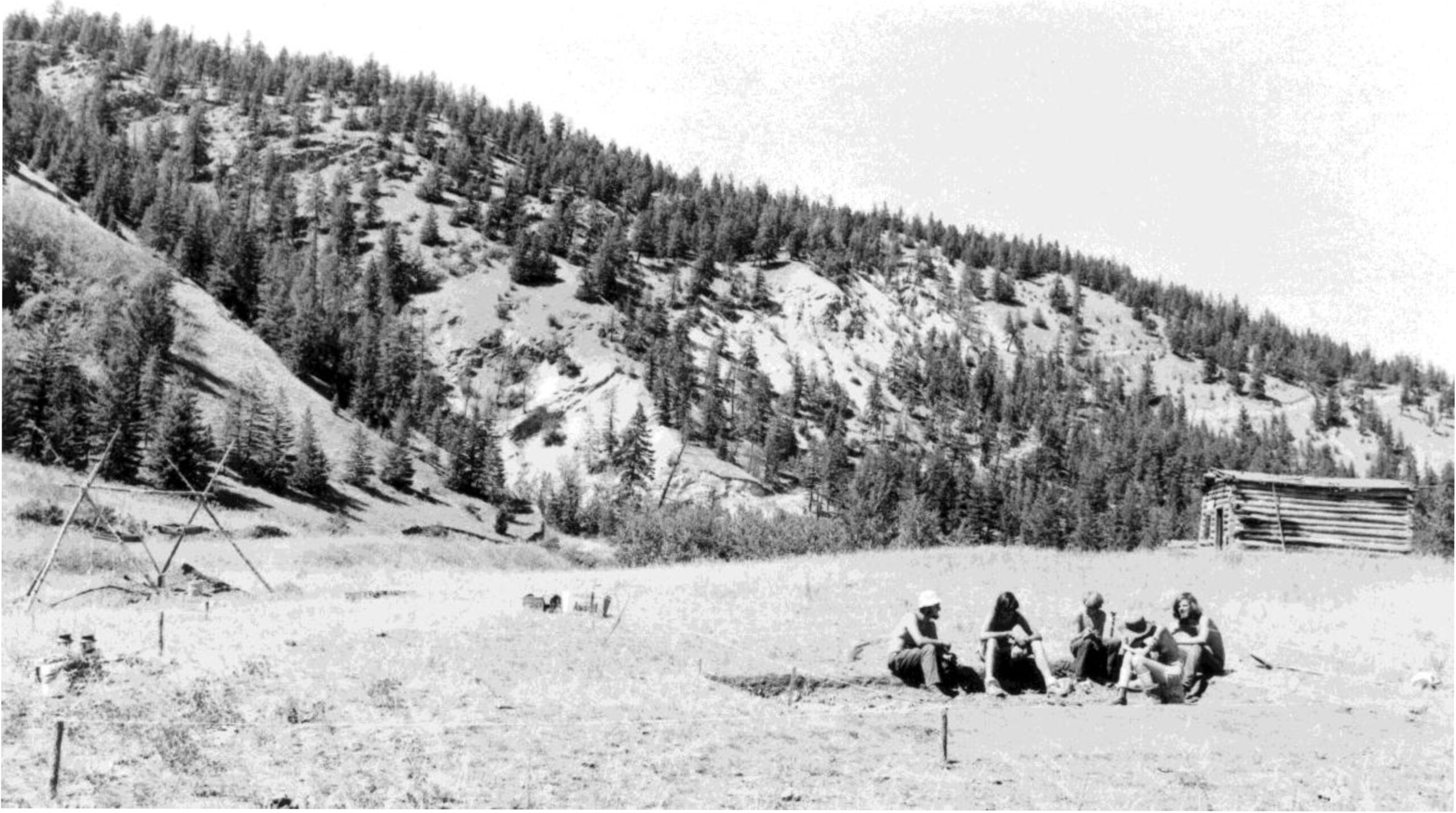By Grant Keddie. Oct 3, 1974.
The Pacific Rubber Snake in the Lower Chilcotin.
This article was published in 1975, in the British Columbia Provincial Museum’s publication Syesis. I have added in the original images that were not used in the final publication. I have also added the specific geographical points for the two snake specimens. 51 degrees, 44’ 02” north latitude and 122 degrees, 25’ 30” longitude for the higher elevation specimen and 51 degrees, 44’ 05” North latitude and 122 degrees, 24’, 15” latitude for the lower elevation specimen.

The Pacific Rubber Snake in the Lower Chilcotin
During an archaeological and ecological survey of the Lower Chilcotin region in the summer of 1972, two Pacific rubber snakes, Charina bottce (Blainville), were recorded. The first was located at 10 a.m. on June 26 on the south bank of the Chilcotin R. at its mouth (Lat. 52°44’05″N, Long. 122°24’15″W). The elevation was 1,160 ft A.S.L. or 10 m above the average river level.
The specimen was located on the first terrace in a shallow depression, shaded by a cluster of Artemesia tridentata. It measured 48 cm in length and had a maximum width of 1.7 cm and a girth of 5 cm. Photographs were taken and copies filed at the Birds and Mammals Division of the Provincial Museum (PDF- 348) (see Campbell and Stirling, 1971).
I realized later the significance of the find. According to Carl (1968), the farthest north the Pacific rubber snake had been previously recorded was at Rayleigh, 10 mi N of Kamloops. The mouth of the Chilcotin is approximately 110 mi NW of Rayleigh.
At 11 a.m. on August 1, 1972, I located another Pacific rubber snake (PDF-348) on the floor of an empty log cabin, approximately 2 km SW of the mouth of the Chilcotin R. on a high, open terrace 1,100 ft above the river or 2,250 ft A.S.L.
The behavioural pattern and general coloration of the snake was the same as that described by Carl (1968). In addition, it had orange eyes and 11 small irregular brown splotches on the ventral surface.
I carefully examined the specimen with the aid of a diagram (Carl, 1968, fig. 2, p. 8) to provide information for researchers interested in substantiating or disproving Klauber’s (1943) claim that two subspecies of the Pacific rubber snake exist in British Columbia.
Klauber’s subspecific identification was based on the number of scale rows and the entire or divided state of the parietal. As future researchers may use details of head plates other than the parietal for subspecific identification, information pertaining to these is included with the more pertinent information in the following list of observed physical attributes: length 60 cm, 35 scale rows, single undivided parietal, two preoculars with three plates in front, the frontal divided and segmented within the divided sections, two internasals (the right one segmented), a single rostal, the mental single with two plates on each side of it, and with one pair of chin shields.
Figure 2. The red circle on the right marks the location of the first rubber boa snake, found near the junction of the Chilcotin River with the Fraser River on the right.


References
Campbell, R. W., and Sibling, D. (1971). A photoduplicate file for British Columbia vertebrate records. Sy esis, 4:217-222.
Carl, G. C. (1968). The Reptiles of British Columbia. British Columbia Provincial Museum Handbook No. 3, Victoria.
Klauber, L. M. (1943). The subspecies of the rubber snake, Charina. Trans. San Diego Soc. Nat. Hist., 10:83-90.

